After having to reschedule our 2nd Annual Autumn Event in September due to a big Magic card release, we finally met on Sunday, October 28th for our seasonal tournament at the Game Vault in Fredericksburg, VA. Half a dozen past attendees couldn’t make the date because of work schedules, moving, or–at the last minute–to prepare for approaching hurricane “Sandy”. But 7 of the original 14 registered players showed up, and with some adjustments we made the format work so all players could participate in each round, and we had the underdog team come out on top after playing and scoring a very good final round.
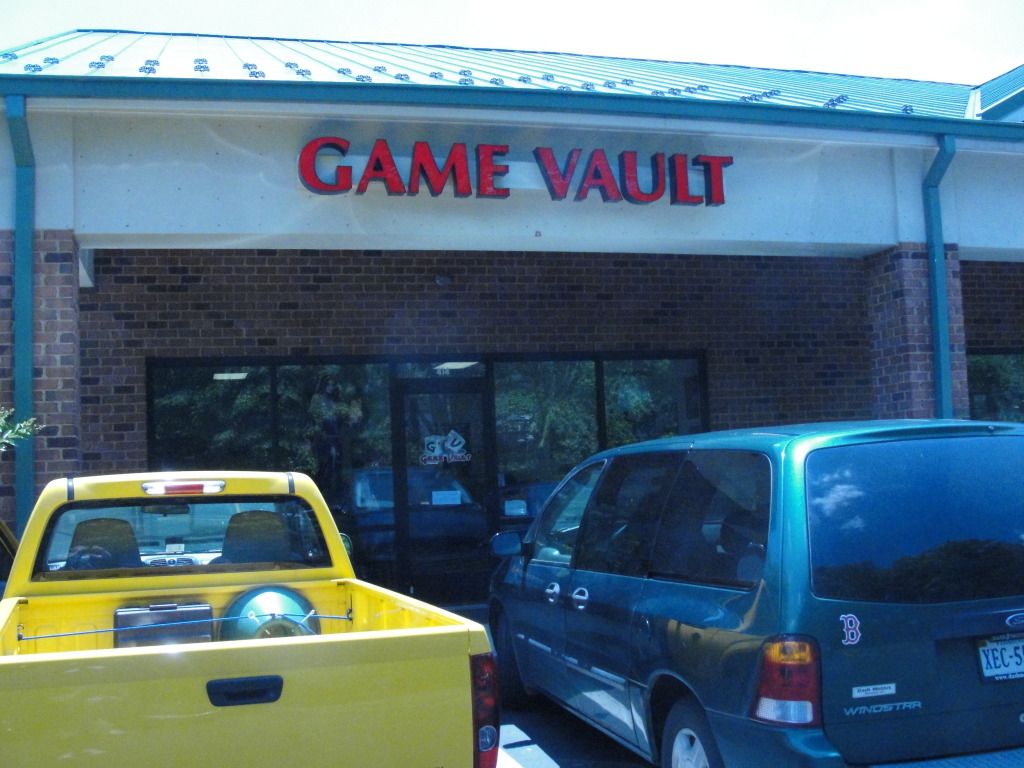
The aim for these seasonal events has been to bring Dystopian Wars players together from around the region (we had one come from as far away as Norfolk, but most were within an hour’s drive of the Game Vault), to play games and enjoy some gamer camaraderie.

Planning for an attendence of 9, I had designed a 3-player “capture the energy vortex” scenario, but with 7 players showing up the morning of the event I used 2 of the original Round 1 Scenarios and then the 3-player scenario for the First Round. The format was something new for our club–a team tournament where players registered as 2-player teams and won or lost together, playing individually in the first 2 rounds and then together in combined team scenarios in the final round. We used Campaign Points as detailed in the Hurricane Season Campaign Book rather than the Victory Points, and it made this event organizer’s duties easier when determining rankings at the end of each round and tracking total accumulated points for teams.
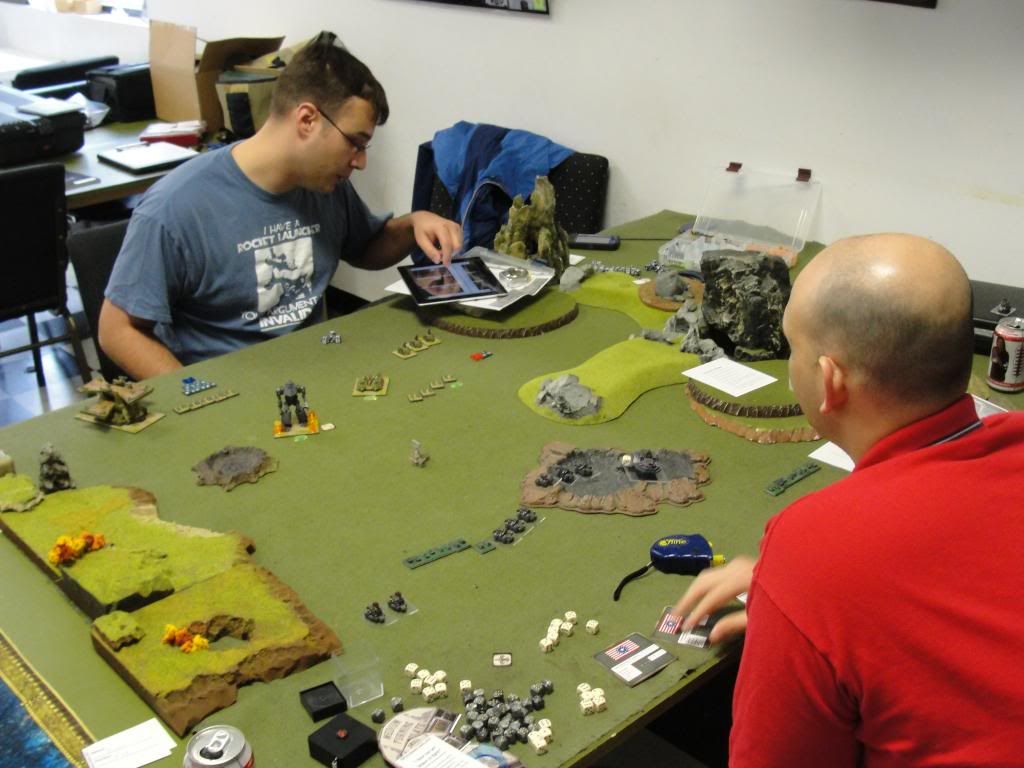
In place of using STAR cards we used the Action Cards I’ve developed for past events; each team started the tournament with 8 cards to share–the cards featured effects similar to STAR cards , but each card could only be played ONCE during the entire event. At one point in the final round (I played in order to round out the players so everyone could play throughout the event), I played the “Man Battlestations!” Action Card which doubled the number of AA dice I could roll against a rocket attack, and after suffering a Critical Hit of “Shredded Defenses” I just crumpled and tore edges of the card. I seem to prefer representational game indicators rather than number tokens (like using cottonballs to indicate models have activated in a turn rather than abstract Activation tokens). It turns out, however, that my opponent thought better of it and used the “I Have Not Yet Begun to Fight!” card to change my Critical Hit to a Hard Pounding, causing the loss of 3 AP on my War Gyro and softening it for a fatal boarding action by a squadron of his FSA frigates.
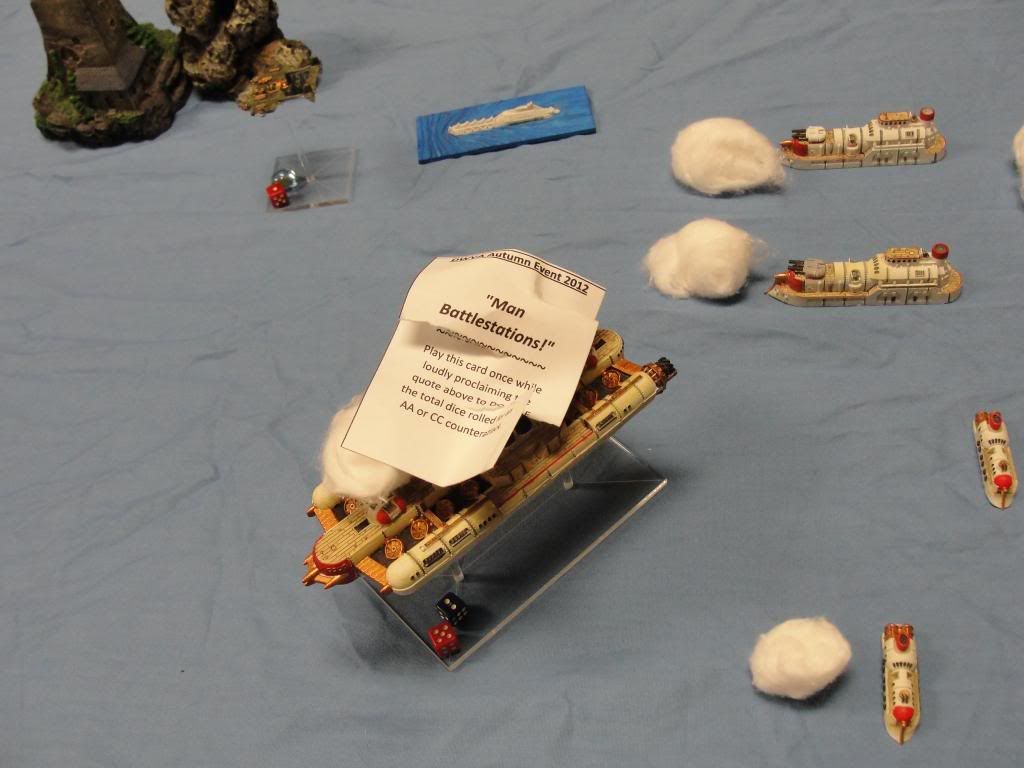
Our veteran player suffered some serious casualties in his first game, losing his Metzger and then much of his Prussian Armored force, but he still managed to win a narrow victory. The theme for this event was aimed toward more of a campaign rather than a series of abstract game matches. Each team had an agenda to explore around the South Atlantic in search of some new technology, and each team needed to bring at least 1 Armored Core Force and 1 Naval Core Fleet.

Players were matched by random draw of registration slips between teams (no player would end up playing against his own teammate), and after determining the first 2 matches, the first a naval scenario and the second a land scenario, the remaining 3 players faced off in a triangle for an open sea battle to approach and control a mysterious energy vortex swirling above the waves.
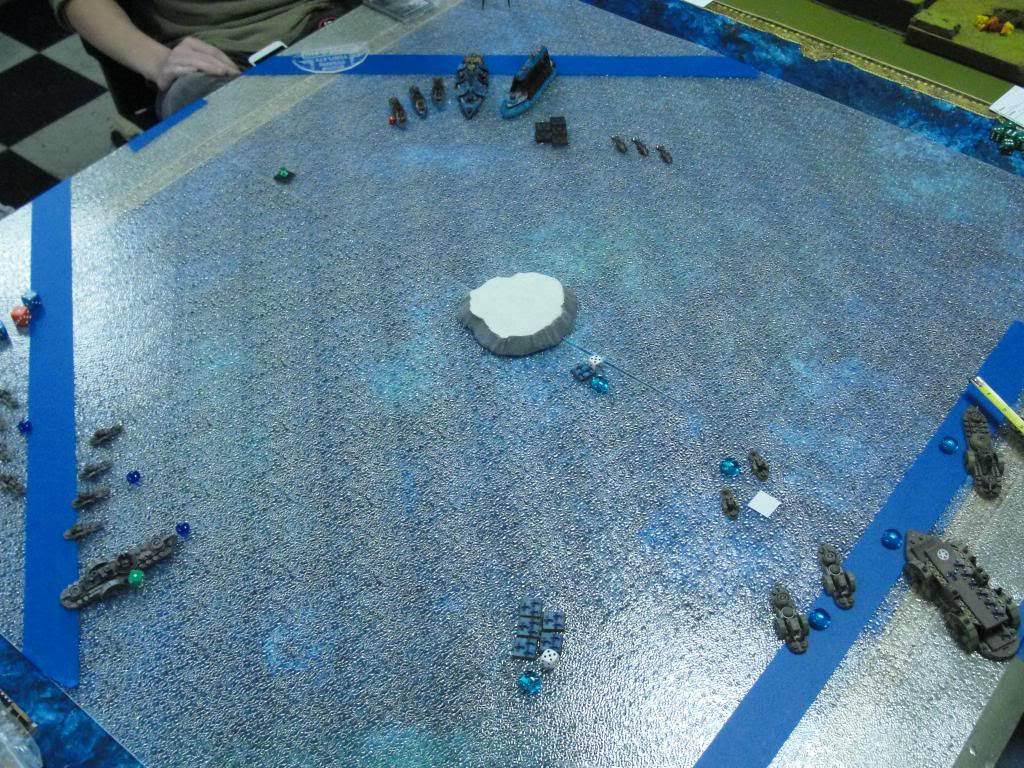
After the 1st Round we broke for lunch and players put out their best painted models for a secret ballot painting contest. Other gamers in the store were invited to help us out by providing a few more than the 7 votes we expected from the DW players.
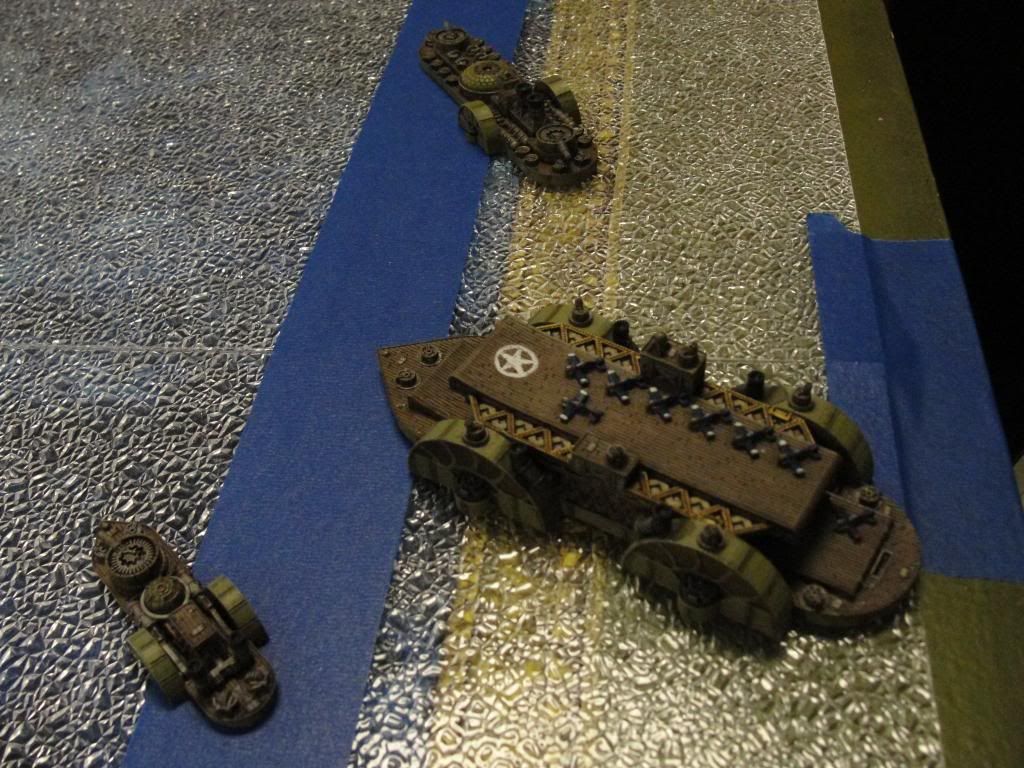
All of the models involved in this event were painted to a basic degree, but we certainly had some extraordinary models on some tables. When one player showed up and realized he had left his fleet at home, two other players immediately volunteered to loan their “second” painted fleet for the day.
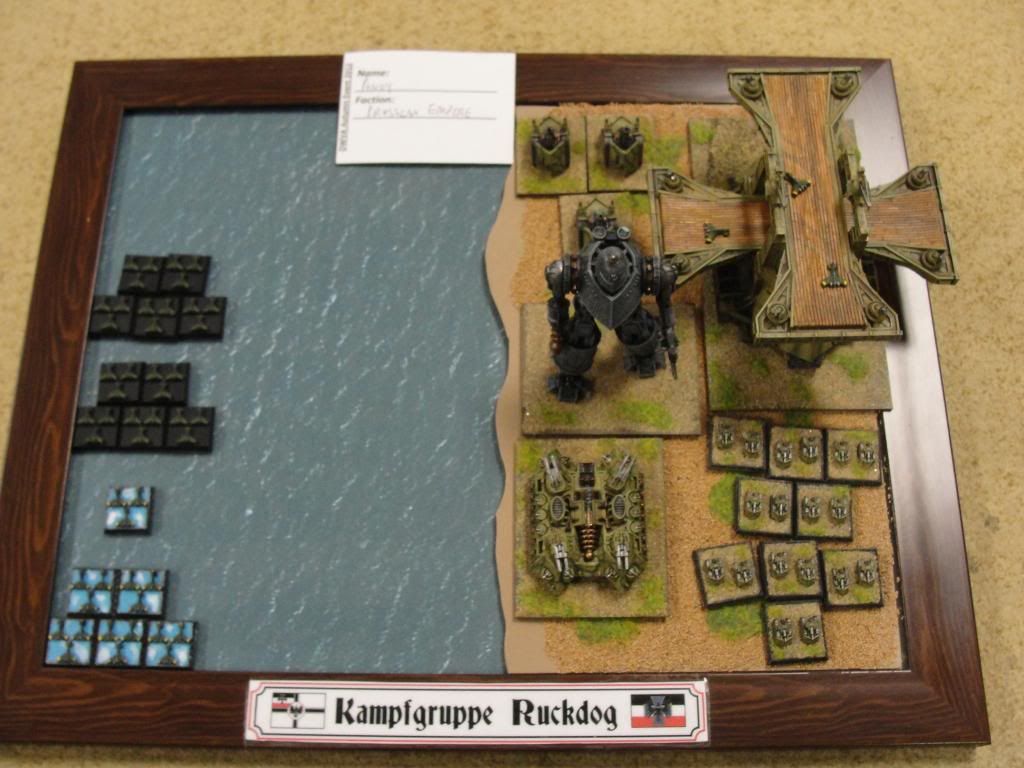
Yes, Ruckdog received half the votes to win… again. Unfortunately I missed photographing both his armored and naval models together on display–he already started setting up for a naval scenario in the 2nd round when I took this picture.
Before the 2nd round, Teams were ranked by combined CP scores from the 1st round; teams at the bottom half selected which table they wanted to set up on, providing them a slight advantage in choosing the type of scenario which might favor their respective fleets. Then the Teams at the top half of the rankings picked which opponent each played against (again, this avoided matching players against teammates while providing some feel of a campaign where decisions between games mattered).
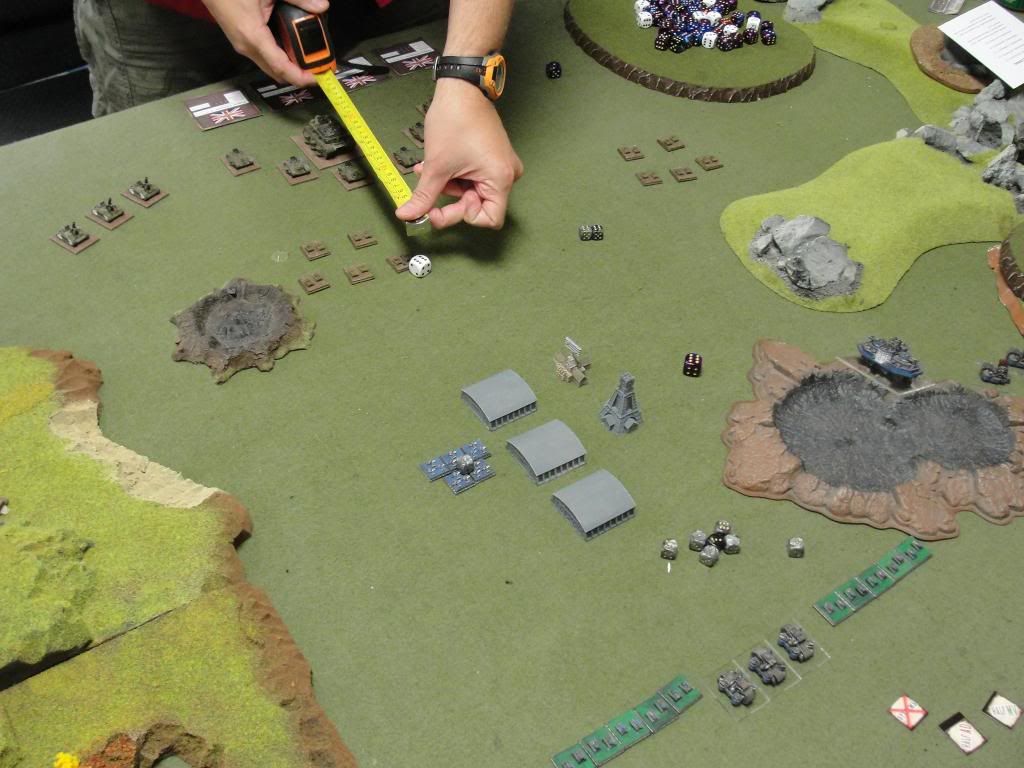
The same FSA player set up in the Patagonian mountain pass where an airfield had been constructed, providing a half dozen free tiny flyers for this defense force. The scenario objectives were much the same: a player with at least one active model within 4″ of the airfield would score an additional 5 CP; if both players had active models within 8″ of the airfield then each player would receive only 2 CP as the objective was effectively contested. The FSA/FSA team was clearly fighting against KoB armored forces, setting aside political alliances during this brief campaign in favor of securing advanced technology all for themselves.
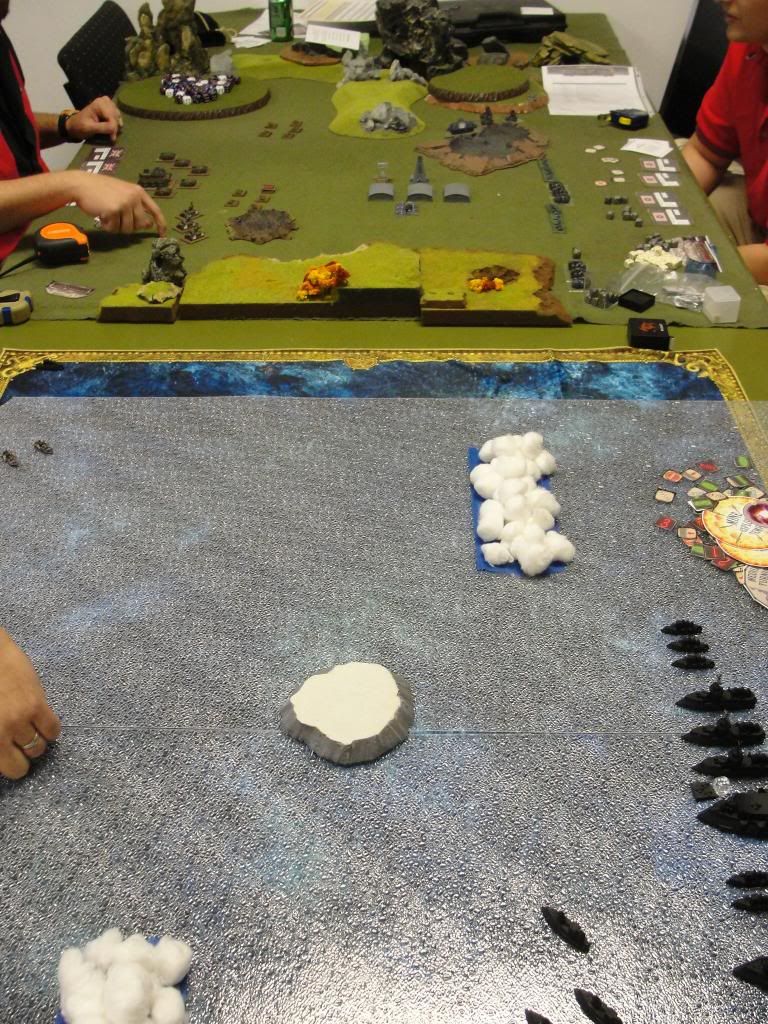
Meanwhile, several knots off the coast, in the frigid waters near the Continent of Antarctica, the FSA fleet of the “All American” FSA team approached to investigate another mysterious energy vortex above a solitary iceberg….

The cotton ball clouds above the blue masking tape represented fog banks which blocked all line-of-sight but allowed safe movement through by any ship models. This battle was close between the French from the Imperial Bond Team and the American FSA (not to be confused with the Canadian/New England FSA fleet which was allied with a British armored force but not necessarily working toward the same goals).

Closer still to Antarctica, the FSA fleet with more strongly British leanings made contact with a Covenant ghost fleet, both fleets attempting to control a volcano inexplicably erupting in a very cold part of the sea.
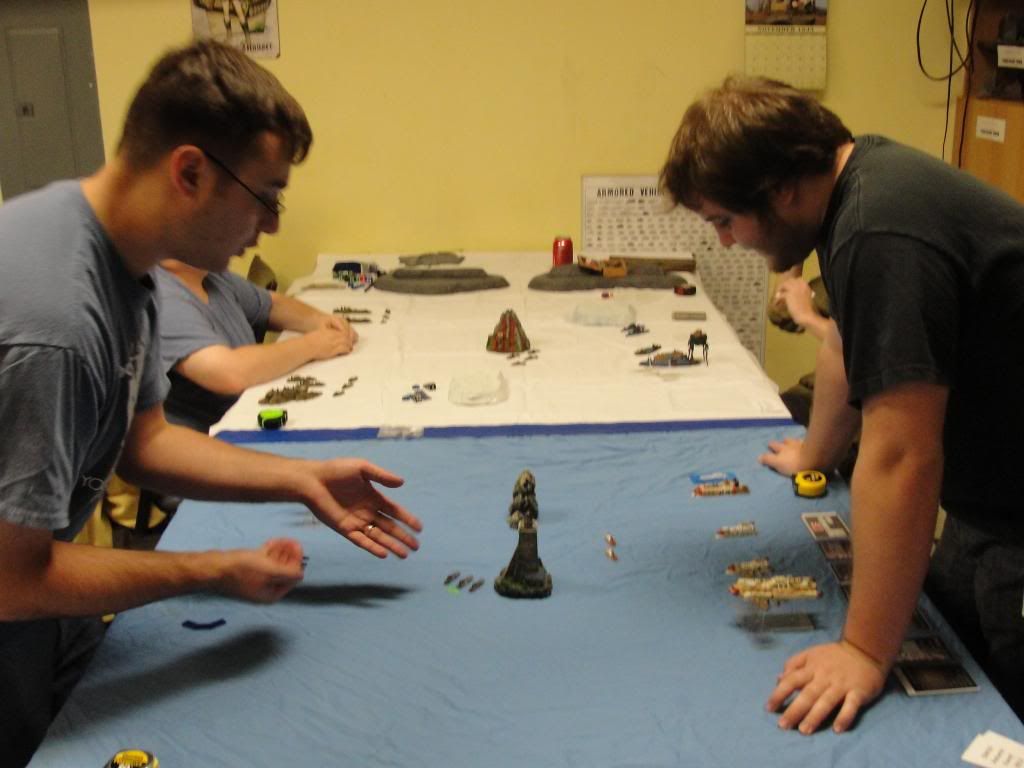
And to round out the players, a brand new player took command of this event organizer’s Blazing Sun fleet and learned the game from our master veteran DW player while providing another game to score for the Imperial Bond and CoA/EotBS Teams respectively.

The top 2 scoring teams had earned enough Campaign Points to track the source of the mysterious energy source in the South Pacific: a rogue Covenant scientist, Otto von Schnichtzer, had been developing an artificial energy portal on the coast of South Africa where he was systematically teleporting famous buildings from around the world to his private coastal scientific complex. The oversized Sphinx (possibly teleported from another planet) seemed to indicate the location of the power source used for the scientific complex. Each team controlled a fleet or armored force respectively, and CP were earned for moving active models within range of the green felt areas.
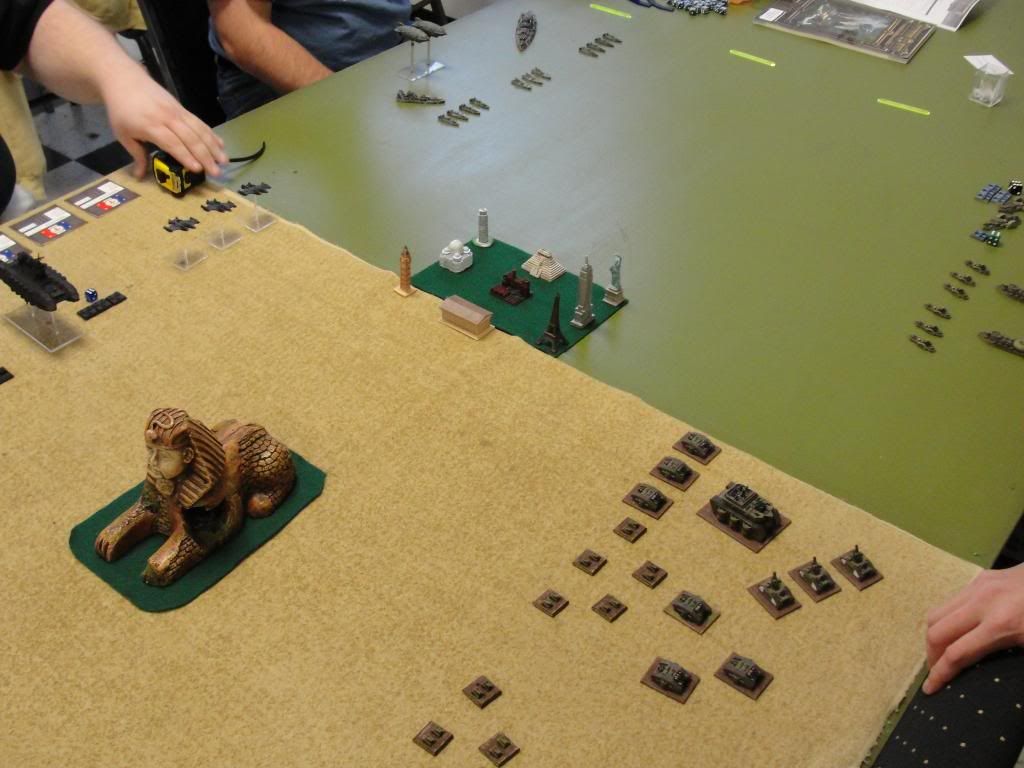
And in the other room, the lower ranked teams faced off at a similar coastal location on Antarctica. At the end of the round, the “All American” FSA team, which had ranked 3rd overall after both 1st & 2nd rounds, played a very good game together, battleships firing salvos at Covenant landships when not engaging Blazing Sun ships, and it turned out that the “true” power source for Dr. von Schnichtzer’s was below a volcano on the coast of Antarctica.
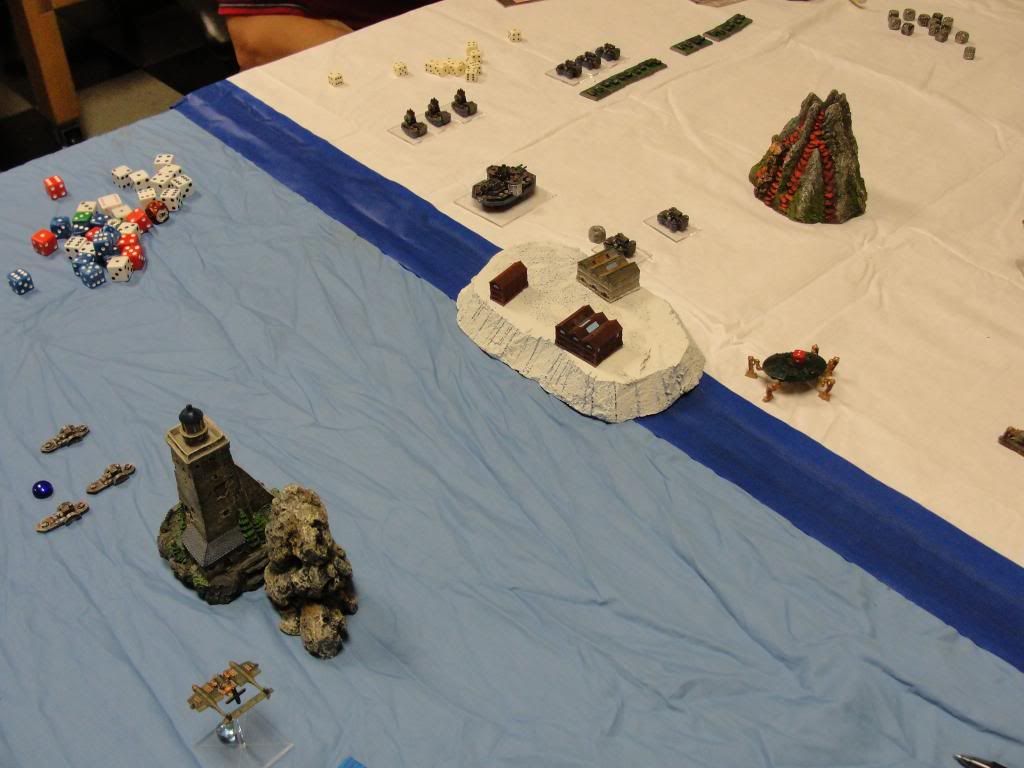
The two players of the top scoring team received a prize of half the registration money collected in store credit and proceeded to paw through the selection of DW model blisters. And glossy flag decals were handed out. All together, some new players learned the rules better from some of the more veteran players, plenty of games were played, and everyone seemed to enjoy the better part of a day spent inside moving model ships, tanks and planes around on sheet-covered tables.
Thanks to everyone who participated, and I look forward to putting together an even better event in February.

Thanks for the write-up Aaron! It was a really fun event; I think we could all see how much effort you went into putting it together.